A Beginner's Guide to Thermoforming Blister Packaging Machines
Packaging is an essential component of business success. It comes in a vast selection of styles. But if you're looking for a cost-effective option, thermoforming blister packaging is a type that you can't miss out on. This type of packaging is widely used in various industries, from pharmaceuticals to consumer goods.

Thermoforming blister packaging can also be classified into three major types based on the material used. They are plastic-paperboard, plastic-plastic, and aluminum-plastic.
How do you produce the packaging? An efficient thermoforming blister packaging machine is all you need. This article covers everything you need to know about the machine. You will learn what a thermoforming blister packaging machine is, its parts and components, how it works, differences from other blister machines, and more.
What Is A Thermoforming Blister Packaging Machine?
A thermoforming blister packaging machine is also known as a blister thermoformer in the industry. As the name implies, this specialized machine utilizes heat to create blisters for packing products.
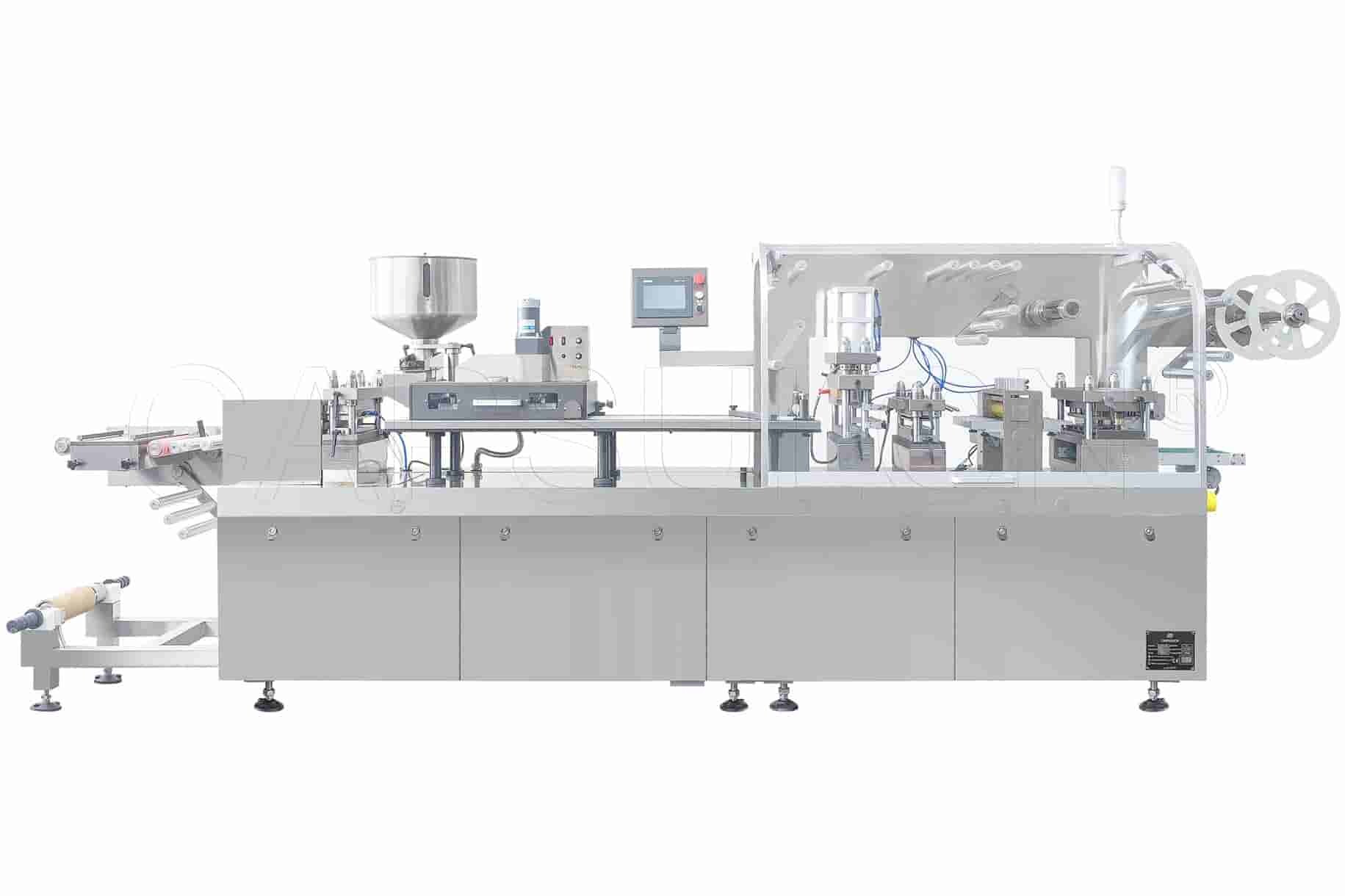
As mentioned, the thermoforming machine can produce three types of blister packaging (plastic-paperboard, plastic-plastic, and aluminum-plastic). The "plastic" in the term of each type refers to the forming material. These blister machines apply heat to soften the forming material and then form it into bubbles or pockets of the desired shape using a mold. The other word of the term of each type refers to the backing material. The formed blister packs are finally sealed to this sheet of paperboard or plastic.
Thermoforming blister packaging machines are a budget-friendly option to produce visually appealing and secure packaging for various products.
What Are The Essential Parts of A Thermoforming Blister Packaging Machine?
A thermoforming blister packaging machine consists of multiple working stations. To operate this machine more efficiently, let's start with a range of its critical parts.
1. Forming Film Unwinder
2. Preheating Station
3. Forming Station
4. Hopper
5. Material Feeder
6. Lidding Film Unwinder
7. Heat Sealing Station
8. Embossing & Perforating Station
9. Traction System
10. Punching Station
11. Discharge Chute
12. Waste Material Rewinder
13. Others
Forming Film Unwinder
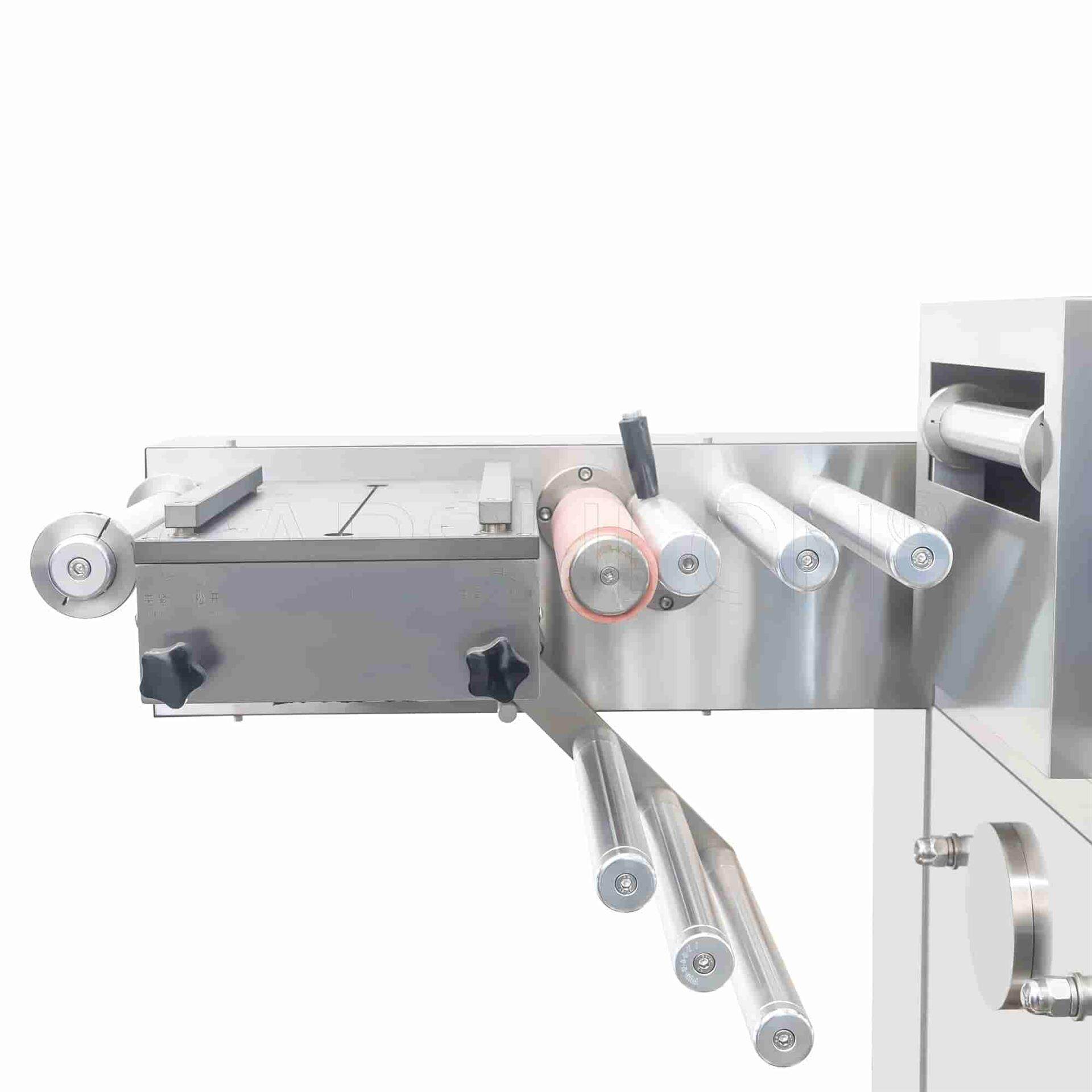
This is the starting point of the entire thermoforming blister packaging process. The forming film enters the machine from here.
This component is used to place the roll of the forming film. Once the machine starts, the unit unwinds the forming film and feeds it into the forming station at a controlled speed. Depending on your machine model or settings, the process can be performed in a continuous or intermittent motion.
Preheating Station
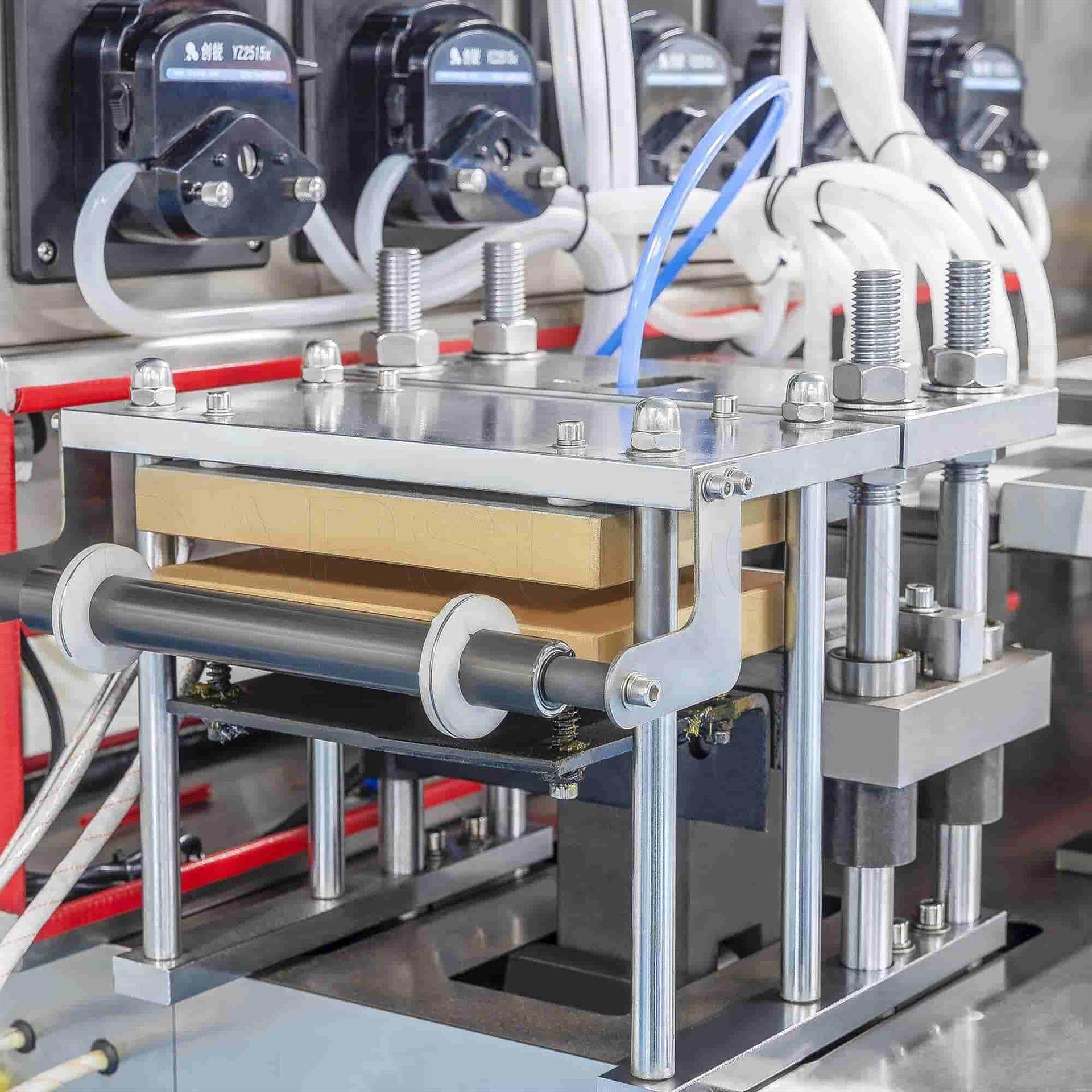
This unit is essential for thermoforming blisters. It consists of two heating plates. The upper and lower plates move toward each other to heat the film fed into this station.
The heating plates hold and preheat the forming film for seconds until it becomes pliable. Once the preheating is done, the upper and lower heating plates retreat. The preheated forming film is then dragged to the next station.
Forming Station

This is the most important component of a thermoforming blister packaging machine. The forming unit typically consists of two molds. The upper mold comes with an orifice that allows compressed air in. The lower mold features multiple cavities for forming blisters.
This station is also controlled at a certain temperature to keep the PVC film flexible enough for forming. Once the film is in position, the upper and lower molds come in contact with each other. The compressed air pushes the film into the lower mold cavities to form the profile of blisters.
Hopper

This thermoforming blister packaging machine component can be designed to hold pastes or solid dosage forms, depending on your packaging needs. It provides ample space to store the material to be packed in blisters. If you're packaging paste-like products, then you need to equip the machine with peristaltic pumps to feed the product.
The hopper is typically made from sanitary stainless steel. It boasts a sight window, allowing the operator to observe the product level inside. This component is easy to install and disassemble for quick changeover.
Material Feeder

This component comes with an individual motor for efficient material feeding. It also has a control panel, allowing separate control over filling and vibration.
The material feeder comes in a box shape and features multiple brushes inside. These brushes rotate to ensure each blister is filled with the product that flows from the hopper. These brushes can also stop the excess products from traveling with the filled blister packs.
Lidding Film Unwinder

This unit acts as a lidding film feeder. As with the forming film unwinder, it comprises multiple rollers to unwind and feed the film while maintaining the proper tension of the film.
The lidding film unwinder and rollers help to prevent film wrinkles and misalignment. This also controls the film feeding speed and direction, ensuring a smooth blister packaging process.
Heat Sealing Station
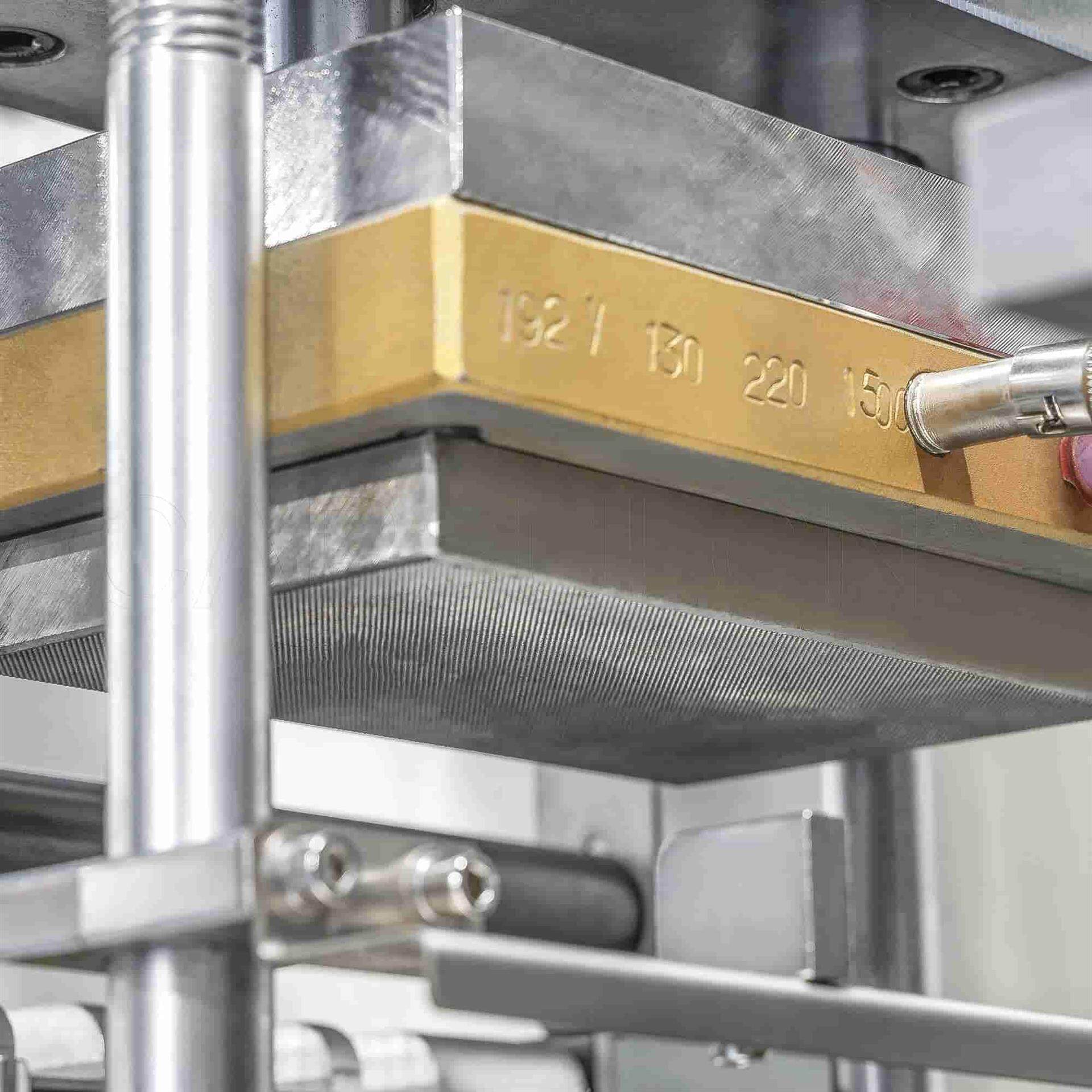
The heat sealing unit consists of two molds. The upper mold has a flat surface, while the lower mold comes with the same number of cavities that the lower forming mold has. Additionally, this unit has heating elements and a pneumatic pressure system.
The filled blisters and lidding film meet here. The upper and lower sealing molds seal the blisters and film together by applying heat and pressure. Finally, an airtight, tamper-evident seal is created over the blisters.
Embossing & Perforating Station
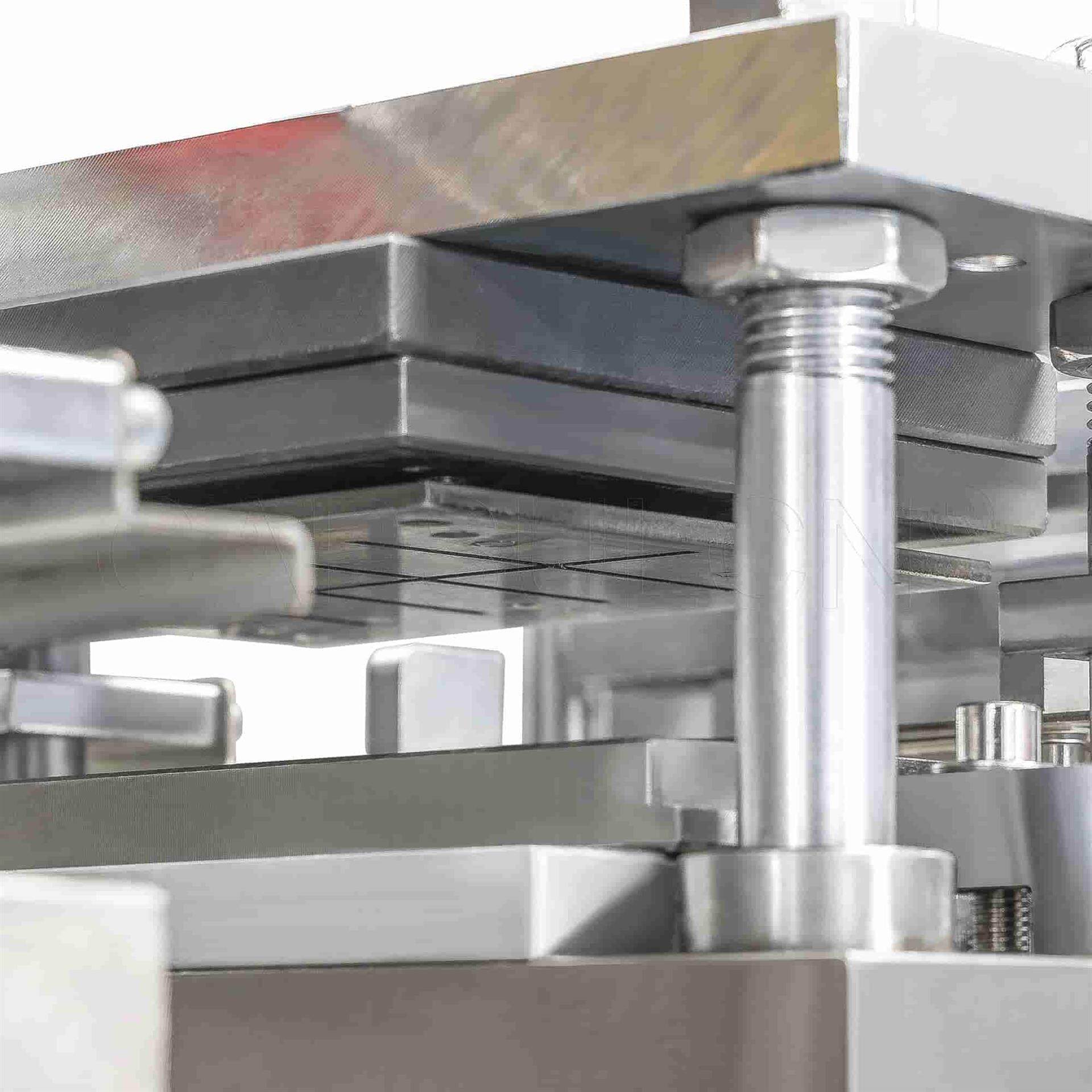
This unit uses pressure to create embossed patterns (e.g., batch numbers or expiry date) and perforation lines on the sealed blister packs. The embossing & perforating station is optional, depending on your packaging requirements.
Traction System
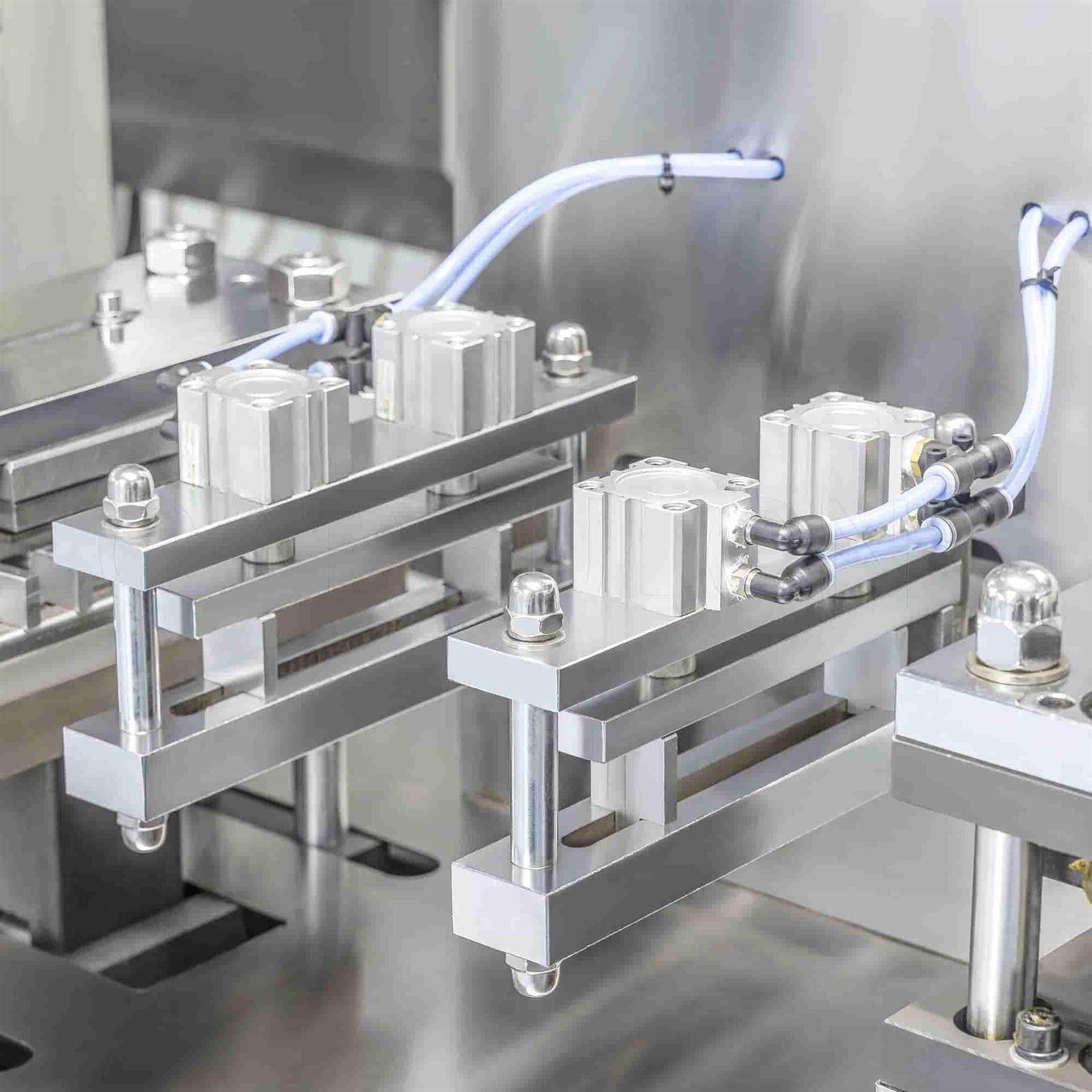
This servo traction system controls the movement of the formed blister web. It pulls the web from the embossing & perforating station to the punching station.
The system can be adjusted to tailor the positioning of blister packs according to the product specifications. This ensures the blister web is precisely trimmed into individual packs in the punching station.
Punching Station
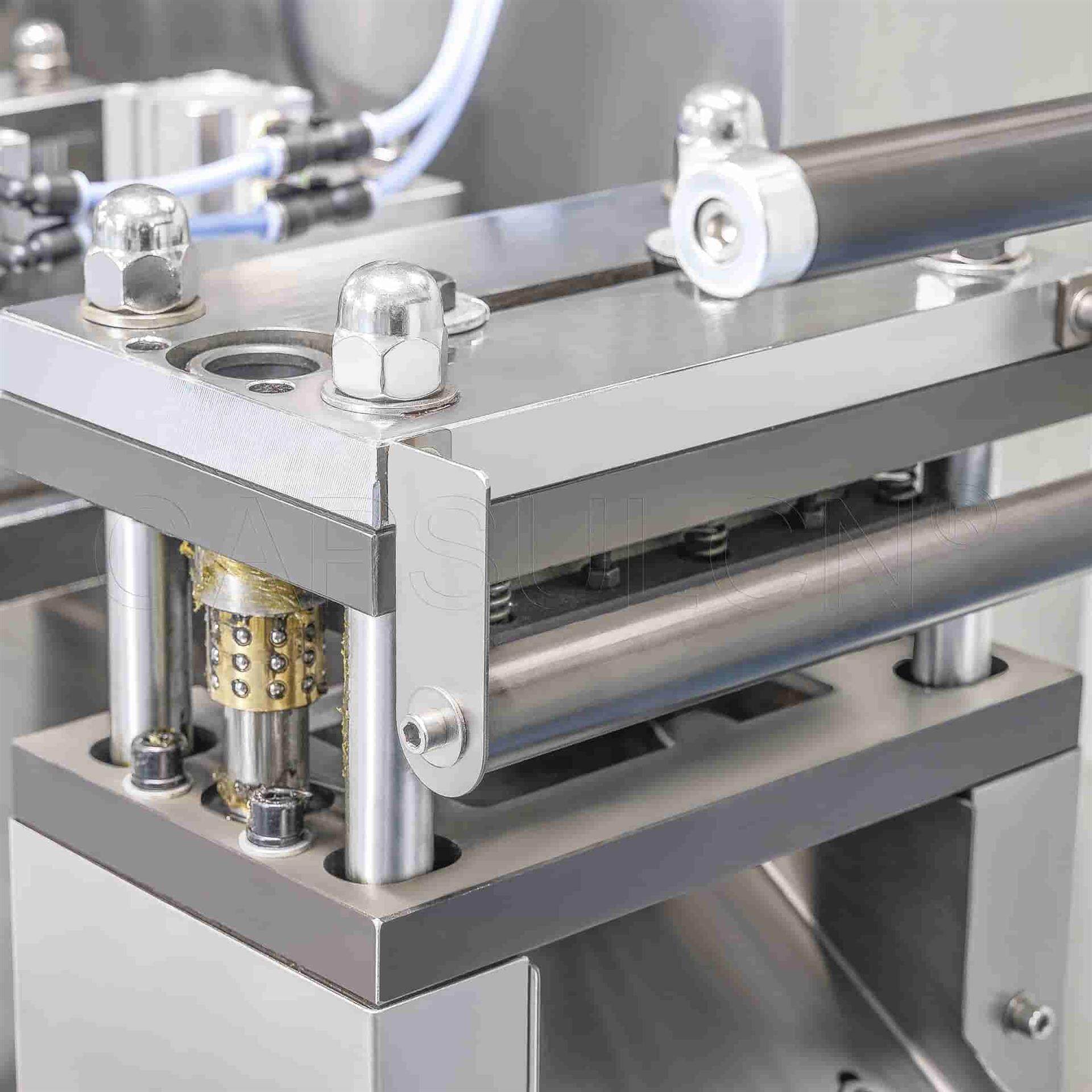
The formed blister web reaches here for trimming. The punching station utilizes a die cutter to separate the desired blister packs from the web. It applies pressure to form individual blister packs. The punching process can be customized based on your product specifications.
Discharge Chute

The discharge chute guides the finished blister packs from the thermoforming blister packaging machine. It typically connects to a collection area. If you're handling blister packaging on a production line, the discharge chute can be integrated with a conveyor belt for further processing, such as inspection or cartoning.
Waste Material Rewinder
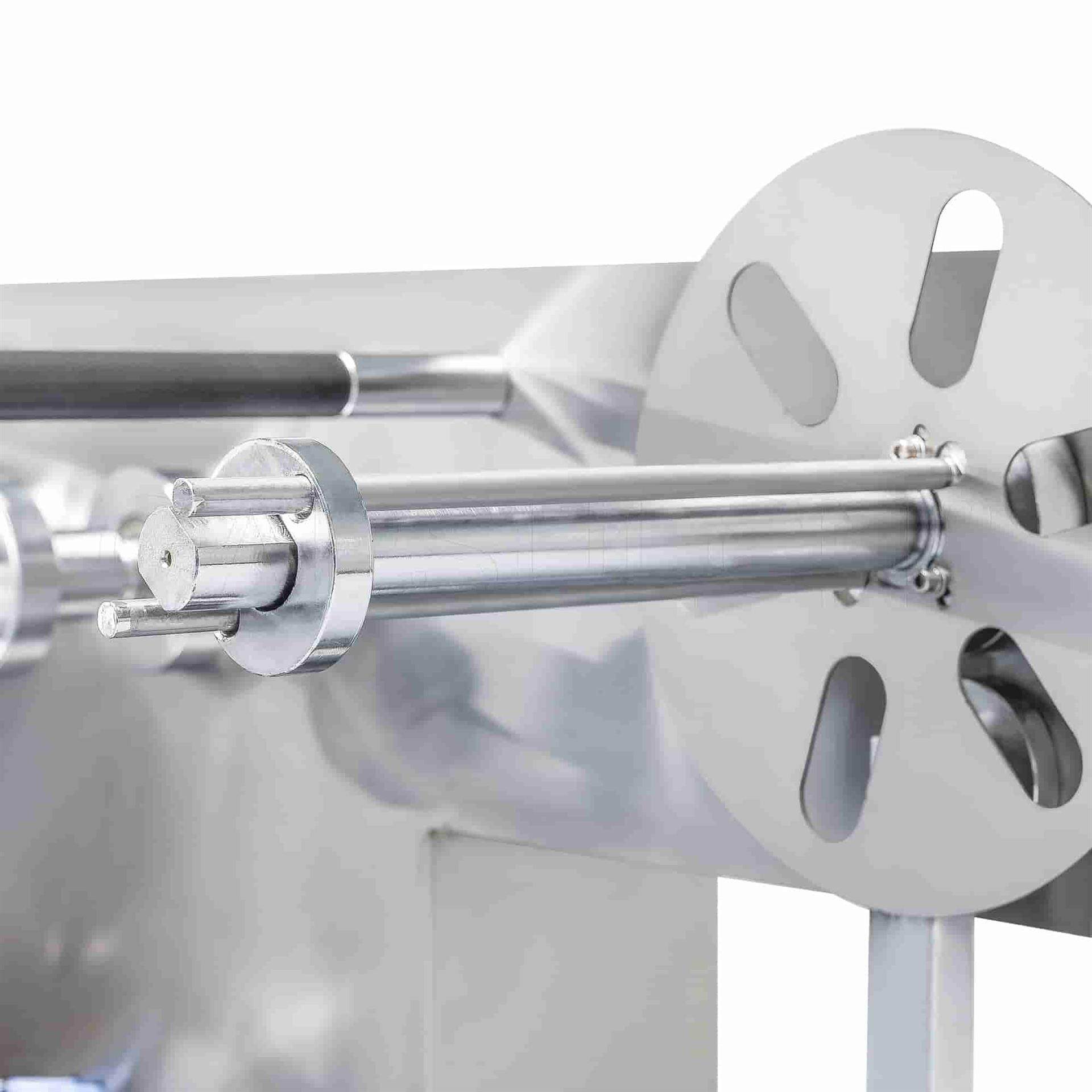
The waste material rewinder is also a critical component of a thermoforming blister packaging machine. It adds the finishing touches to the blister packaging process.
This unit is responsible for collecting and rewinding the leftover material after blister packs are trimmed out of the web. It helps to dispose of the waste material properly and create a clean, organized working environment.
Others
Of course, as an automated system, a thermoforming blister packaging machine has other important parts and components, including an electrical enclosure, PLC-based HMI, various motors and cylinders, guide rails, printers, cameras, photoelectric sensors, and more. Many of them can be mounted based on your specific blister packaging needs.
How Does A Thermoforming Blister Packaging Machine Work?
With the knowledge about essential components, it's easier to understand the working principle of a thermoforming blister packaging machine. Here's a detailed breakdown of the blister thermoforming and packaging process.
STEP 1 Wind the packaging film.
Both the forming film and lidding film unwinding units have multiple rollers. These rollers are used to guide the films into the machine.
This step requires human involvement. Follow the instructions to wind the forming film over the rollers in the right direction. Thread the film through the preheating station to the punching station. For the lidding film, wind it over the rollers and pull it through the heat sealing station.
STEP 2 Form blister cavities.
As the forming film enters the machine, it's preheated by two heating plates. The film becomes pliable and then advances to the forming unit.
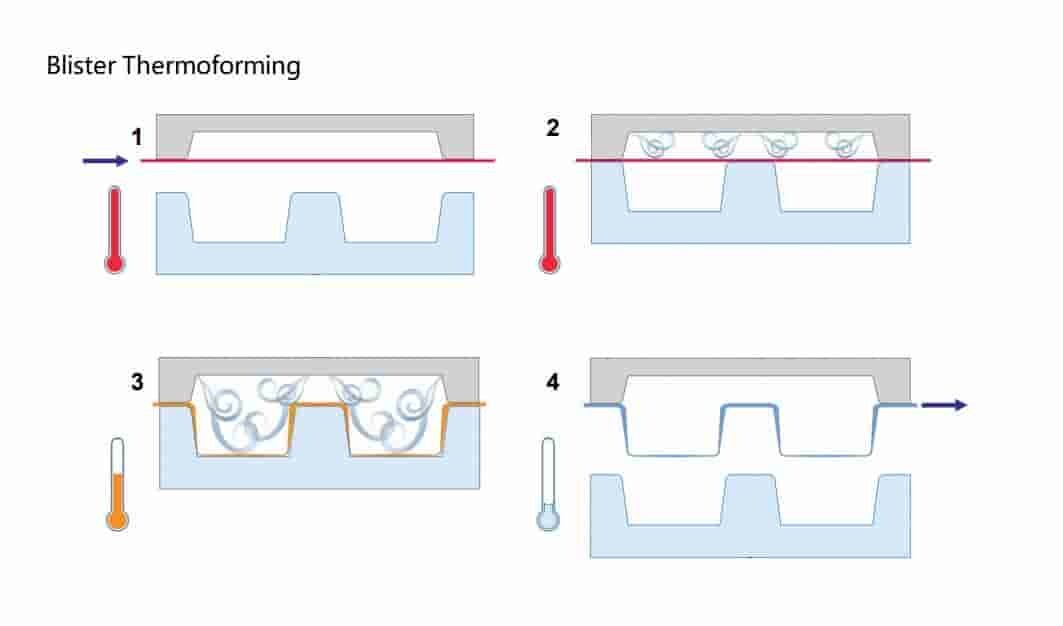
The upper and lower forming molds come in contact to hold the film. The heated compressed air is let in to push the film down. The film is forced to nestle in the lower mold cavities. The profile of blister packs is finally formed.
STEP 3 Feed the product.
Suppose you're packaging solid dosage forms like tablets or capsules. These products flow into the box-shaped material feeder from the hopper in a controlled manner.
Through the vibration, these products fall into the formed blister cavities pulled to this station. The feeder features multiple brushes inside. These brushes rotate to ensure each blister cavity is filled with the product. Additionally, these brushes stop the excess products from traveling with the filled blister packs.
STEP 4 Seal the forming film and lidding film together.
The formed blisters and the lidding film enter the heat sealing station at the same time. The sealing system applies heat and pressure to create a secure seal over the blisters.
STEP 5 Emboss and perforate the blister web.
This step can be optional. The molds in this station have embossing patterns and perforation lines. They push against each other to leave the patterns and lines on the blister web. The patterns can be the batch number or expiry date of the product. The perforation lines facilitate a clean tear of the blister packs for accurate dosage control.
STEP 6 Cut blister packs.
The formed, sealed, and perforated blister web is dragged to the punching station by the traction system. A precision cutting die cuts the web into individual blister packs according to the specifications.
STEP 7 Discharge the finished blister packs and rewind the waste web.
Once cut into the desired individual packs, the finished products are discharged from the thermoforming blister packaging machine. Based on your machine configuration, they will be collected or conveyed downstream for further processing, such as wrapping or cartoning.
In the meantime, the residual material is rewound onto a roller for proper disposal and recycling.
Differences Between Thermoform Blister Packaging and Cold Form Blister Packaging
The thermoforming blister packaging machine we discussed today is the DPP-260 from iPharMachine. In addition to thermoforming high-quality blister packs, this versatile machine can produce blisters without heat. These blisters are called cold form blister packaging.
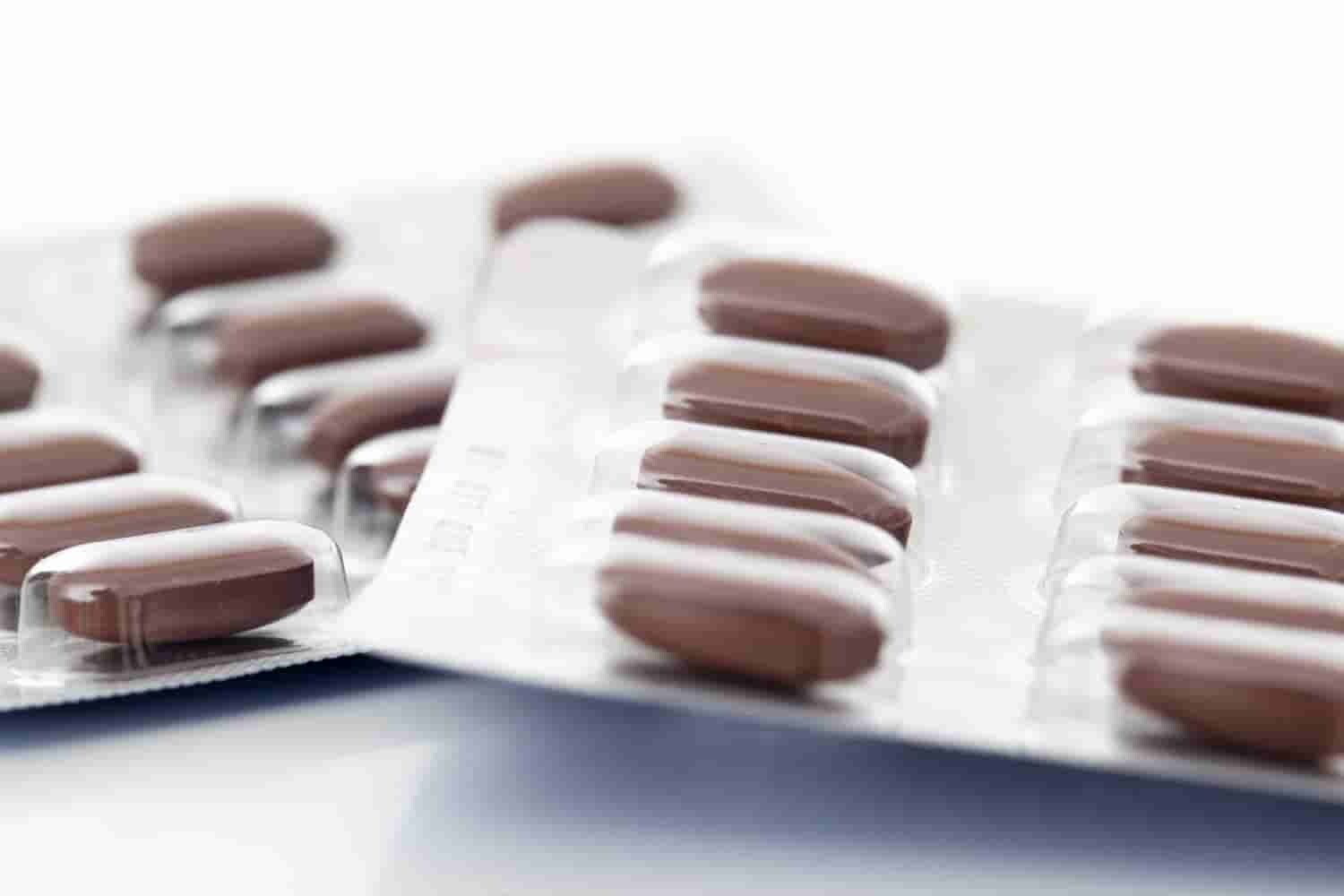

So, what are the differences between thermoform and cold form blister packaging? We put together a comparison table to help you understand. Check this out!
|
Factor |
Thermoform Blister Packaging |
Cold Form Blister Packaging |
|
Material Composition |
PVC film base coated with paperboard, aluminum foil, or plastic |
Aluminum foil base coated with aluminum foil lid film |
|
Blister Formation |
Thermoforming: Heating and pushing PVC film onto a mold |
Cold forming: Pressing aluminum foil layers into shape without heat |
|
Barrier Properties |
Good barrier against moisture and oxygen |
Exceptional barrier against moisture, oxygen, and UV radiation |
|
Cost |
Lower production costs compared to cold form blister packaging |
Higher production costs due to the use of multiple aluminum layers |
|
Visibility |
Clear PVC film allows for easy visibility of the product |
Aluminum foil obstructs visibility of the product, making it difficult to inspect the product |
|
Flexibility |
More flexible and easier to customize for different products |
Less flexible and challenging to mold into specific shapes |
|
Environmental Impact |
Not biodegradable, but PVC is recyclable |
Not biodegradable, aluminum foil is not easily recyclable |
|
Tamper Resistance |
Less tamper resistant compared to cold form blister packaging |
More tamper resistant due to the strong aluminum foil layers |
|
Thermal Stability |
More stable during the blister formation and sealing process |
Requires careful temperature control during the cold forming process |
|
Product Integrity |
May not offer as high level of protection as cold form blister packaging |
Excellent protection against physical damage and external elements |
|
Shelf Life |
Shelf life may be shorter due to lower barrier properties |
Shelf life is extended due to superior barrier properties |
|
Impact Resistance |
More susceptible to impact damage during handling and transport |
Robust design protects against physical damage and impact |
The Bottom Line
If this is your first time using a blister machine, this beginner's guide is meant for you. Understanding the essential components and the principle of the thermoforming blister packaging machine can help you work with it more efficiently. We have also compared the thermoform blister packaging with the cold form process. If you still feel overwhelmed about where to start, contact us today for more information about blister packaging!
Leave your comment
Also Offers


Containment Automatic Capsule Filling Machine SFK-703

Fully Automatic Dosator Capsule Filling Machine CZ-40

Our Team
As an expert in the pharmaceutical and pharmaceutical packaging industry, iPharMachine has provided solutions for hundreds of pharmaceutical and health product manufacturers for 17 years. By visiting customers, we get good reviews from our customers.
- info@ipharmachine.com
- English Español Deutsche







